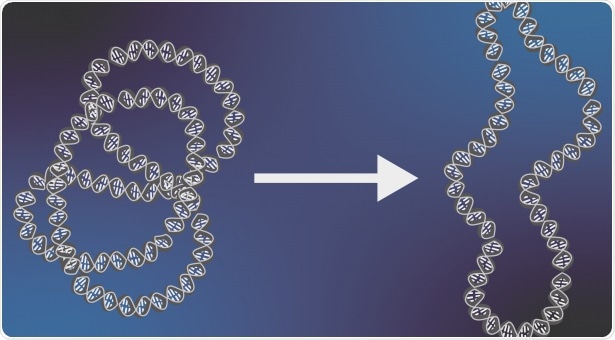The enzyme DNA topoisomerase VI (topo VI) plays a vital role in eliminating chromosome tangles that arise in the cell nucleus of plants, according to a research team headed by the John Innes Centre.

John Innes Centre researchers found that the enzyme DNA topoisomerase VI (topo VI) performs a critical role in removing chromosome tangles that occur in the cell nucleus of plants. Image Credit: Shannon McKie.
The endoreduplication process, in which the DNA content is doubled, is facilitated by this function. Polyploidy is caused by endoreduplication, which occurs when a plant has several sets of chromosomes, as seen in some main crops.
Topo VI was identified in archaea, a form of a single-celled creature without a nucleus, several years back. It was previously solely discovered in plants and parasites like malaria, prompting the scientific question: what is the purpose of this enzyme in eukaryotes, or organisms with nuclei?
Our study shows that topo VI in plants functions to remove chromosome tangles that occur during the endoreduplication process. This potentially explains its presence in plants where during endoreduplication, entanglements are most likely to occur.”
Dr Shannon McKie, Study Lead Author, John Innes Centre
The researchers studied the activity of the enzyme in archaea using a mixture of biochemistry and single-molecule analysis (using magnetic tweezers). The study was a partnership between John Innes Centre and the National Institutes of Health in the United States.
Our study gives unprecedented insight into the mechanism of action of this enzyme at the molecular level.”
Tony Maxwell, Study Senior Author and Professor, John Innes Centre
Prof. Maxwell was also the group leader of the research team.
This work may give us a clue to the role of topo VI in plasmodial parasites and suggests that the enzyme could be a target for anti-malarial drugs in the future. In plants too, topo VI could have potential as a target for herbicides.”
Tony Maxwell, Study Senior Author and Professor, John Innes Centre
Purifying plant and plasmodial topo VI enzymes to define their characteristics and enhance them as possible therapeutic targets is the next step of the research program.
Source:
Journal reference:
McKie, S. J., et al. (2022) Topoisomerase VI is a chirally-selective, preferential DNA decatenase. eLife. doi.org/10.7554/eLife.67021.